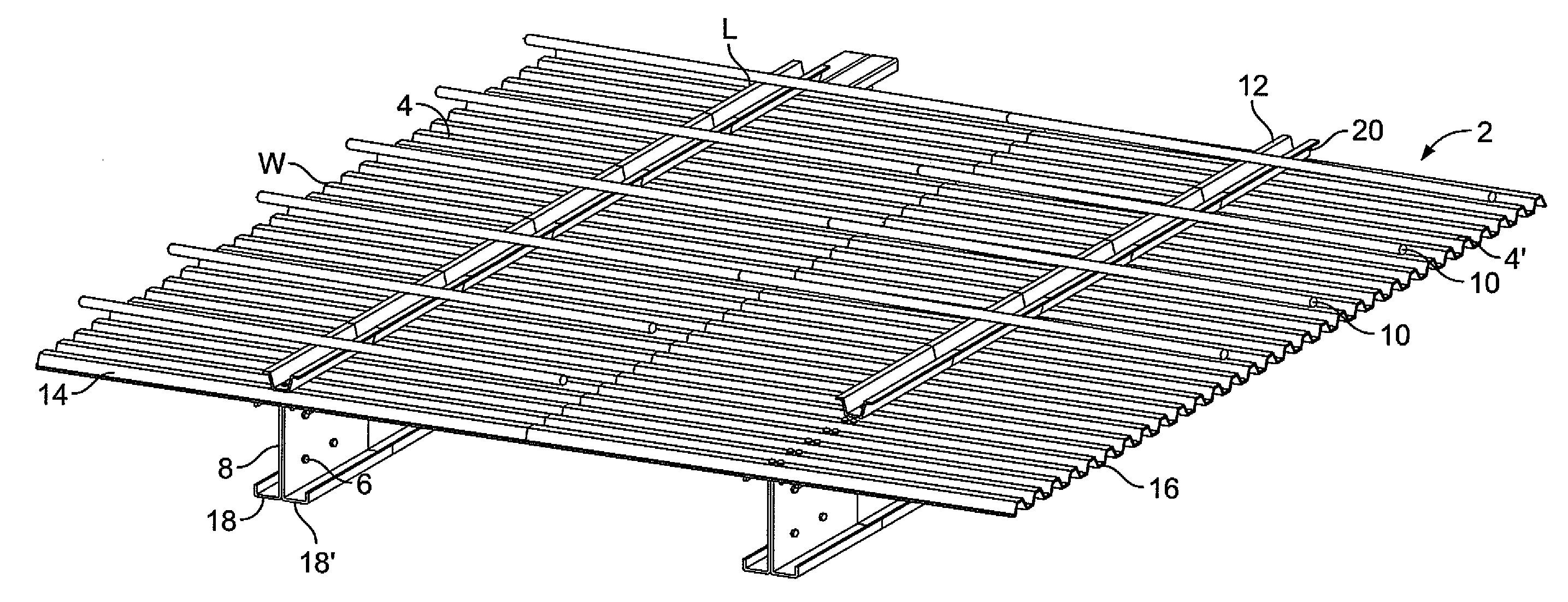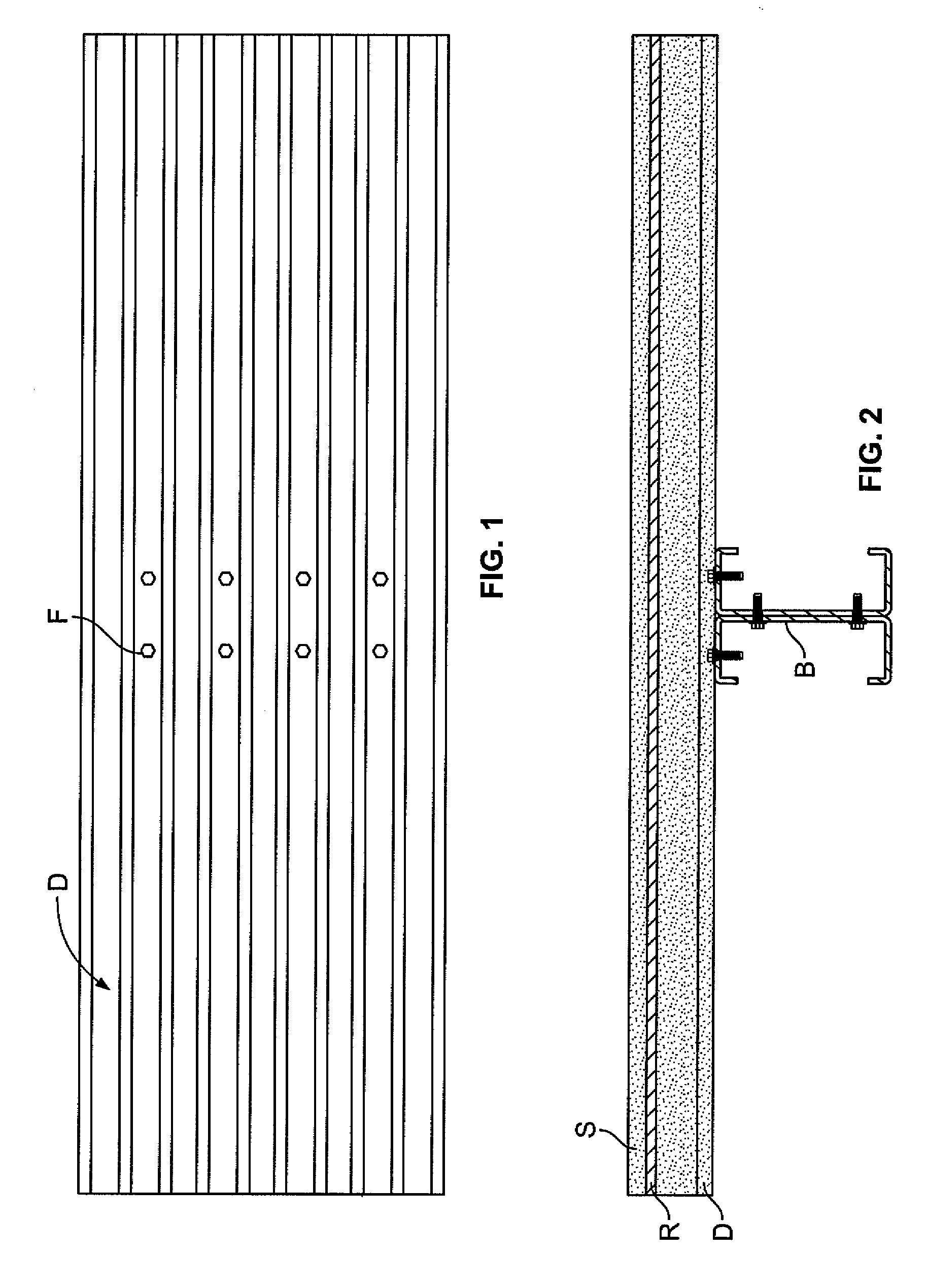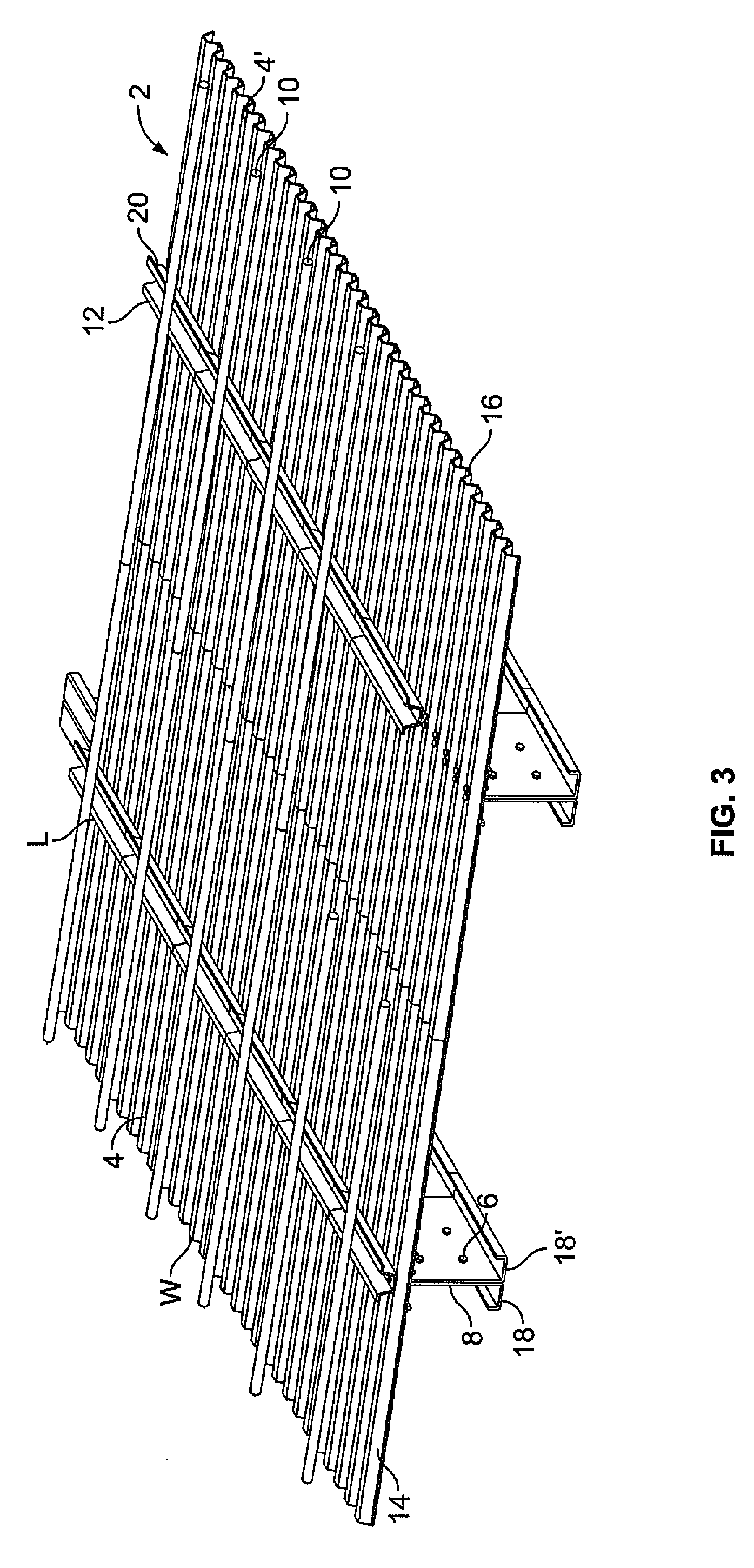System and method of use for composite floor
a composite floor and floor technology, applied in the field of composite floor systems, can solve the problems of increasing cost, discontinuous slabs in the current available floor system, and increasing construction costs, so as to facilitate a reduced assembly time on site, reduce construction costs, and reduce costs
- Summary
- Abstract
- Description
- Claims
- Application Information
AI Technical Summary
Benefits of technology
Problems solved by technology
Method used
Image
Examples
Embodiment Construction
[0036] A composite floor system may include two or more components to allow for transfer of shear forces between the component parts. In some embodiments, multiple components may act as a unified object. Components used in the composite floor system may include lightweight materials, to decrease a total weight of the system while maintaining the strength and durability of the floor system.
[0037]FIG. 3 depicts an embodiment of composite floor system 2 prior to the addition of a slab. In this embodiment, composite floor system 2 includes decking material 4, 4′ fasteners 6, support members 8, reinforcing members 10, transfer members 12, and a slab (not shown).
[0038] Decking material 4 may include various materials including, but not limited to wood, plywood, fiberboard, metal, corrugated sheet metal, sheet metal (e.g. cold form steel), pre-cast concrete materials, gypsum, Gyp-Crete®, gypsum-metal composites, backer boards, rubber padding, fiberglass, polymer sheets, foam-core panels,...
PUM
 Login to View More
Login to View More Abstract
Description
Claims
Application Information
 Login to View More
Login to View More - R&D
- Intellectual Property
- Life Sciences
- Materials
- Tech Scout
- Unparalleled Data Quality
- Higher Quality Content
- 60% Fewer Hallucinations
Browse by: Latest US Patents, China's latest patents, Technical Efficacy Thesaurus, Application Domain, Technology Topic, Popular Technical Reports.
© 2025 PatSnap. All rights reserved.Legal|Privacy policy|Modern Slavery Act Transparency Statement|Sitemap|About US| Contact US: help@patsnap.com



